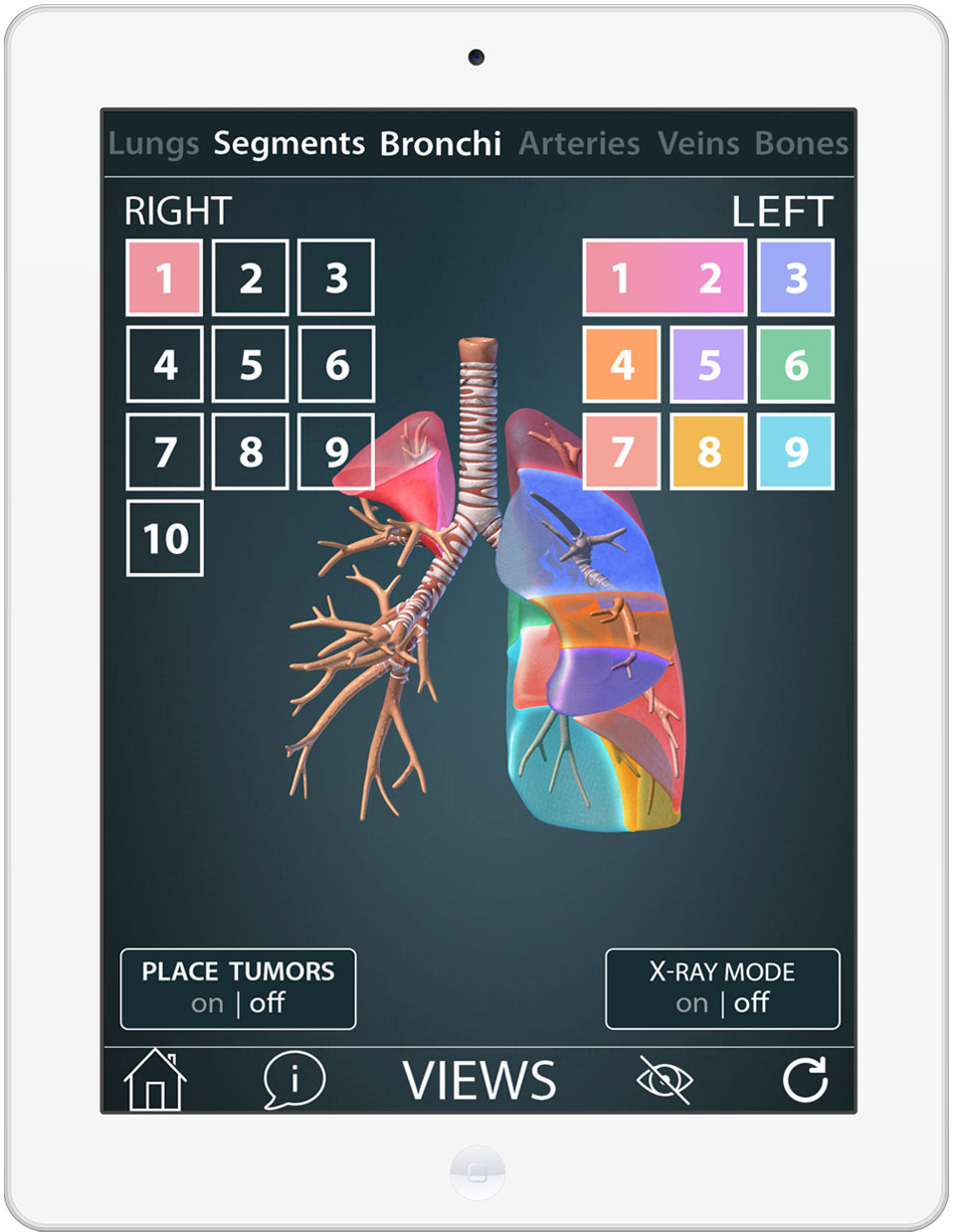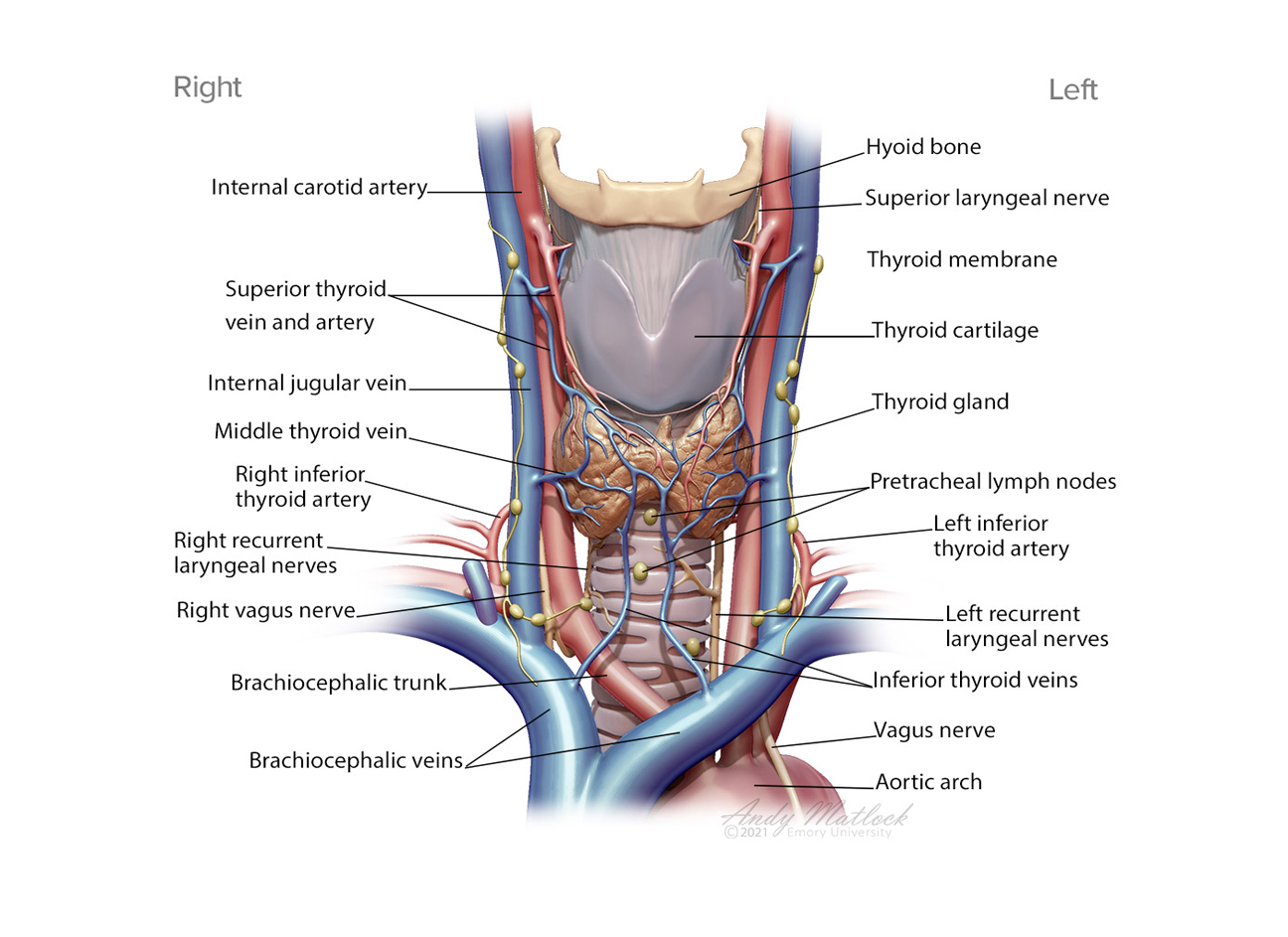The post-2012 projects of the Thalia and Michael Carlos and Alfred A. Davis Center for Surgical Anatomy and Technique (CSAT) are the electronic lineage of the print legacy established by former director Dr. John Skandalakis and his associates in the 1990s through the early 2000s. While CSAT's methods of dissemination now encompass the communication options of the 21st century, the center's original ethos remains unchanged: to generate tools that will teach medical students, residents, and physicians the critical role surgical anatomy plays in the operating room.
Projects

Surgical Anatomy of the Lung
Designed as a comprehensive preoperative planning, education, and patient information tool, this app includes a lung capacity calculator that can assess patients' lung capacity after surgery; an interactive cancer staging calculator, which deploys detailed descriptions and illustrations to provide predictive analyses based on the TNM classifications system; and the Virtual Lung, a 3D anatomy viewer that allows the user to show and hide various anatomical structures and place tumors of various sizes in and around the lungs.
Available in the Mac App Store.
Anatomy of the Male Pelvis
Anatomy of the Male Pelvis translates the depiction of the complex organization of the region into a concise, visually engaging, easy-to-use format for teaching, training, and consulting. Users can navigate throughout the entire network of structures that comprise the male pelvic region, including the bony pelvis, pelvic floor, musculature, vessels, and connective tissue. Structures can be rotated in 3D, made transparent or invisible, and viewed at different magnifications. The app also allows the arteries and nerves that traverse the pelvis to be clicked to trigger identifying text.
Available in Google Play.
Surgical Anatomy of the Liver
Surgical Anatomy of the Liver received a 2014 Award of Excellence from the Association of Medical Illustrators shortly after its release. Intended for trainees, medical students, instructors, and anyone wanting a quick way to learn or teach liver anatomy, the app allows users to mentally map the structure of the liver in ways that were never before possible with print illustrations or imaging studies. The liver can be rotated, sections turned on and off to understand relationships, and anatomical regions tapped to reveal labels.
SCORE Surgical Anatomy
A large volume of 3D-models were created to accurately depict surgical anatomy to residents in training. The resulting illustrations are available to trainees with access to SCORE.
Resources
CSAT's technological resources for developing tools for training and surgical planning are available to the Emory community, as is its ability to produce high-quality illustrations and imagery for use in print publications and/or 3d mediums.
CSAT has 3D printers that can create anatomical models based upon patient scans or other sources. Examples of prior printing requests include facial models for plastic surgery training and imaging phantoms of cerebral aneurysms for CT and MRI accuracy testing.
The center plans to continue expanding its media and technological arsenal for surgical anatomy education, and to make these tools available to the Emory community within certain guidelines.


